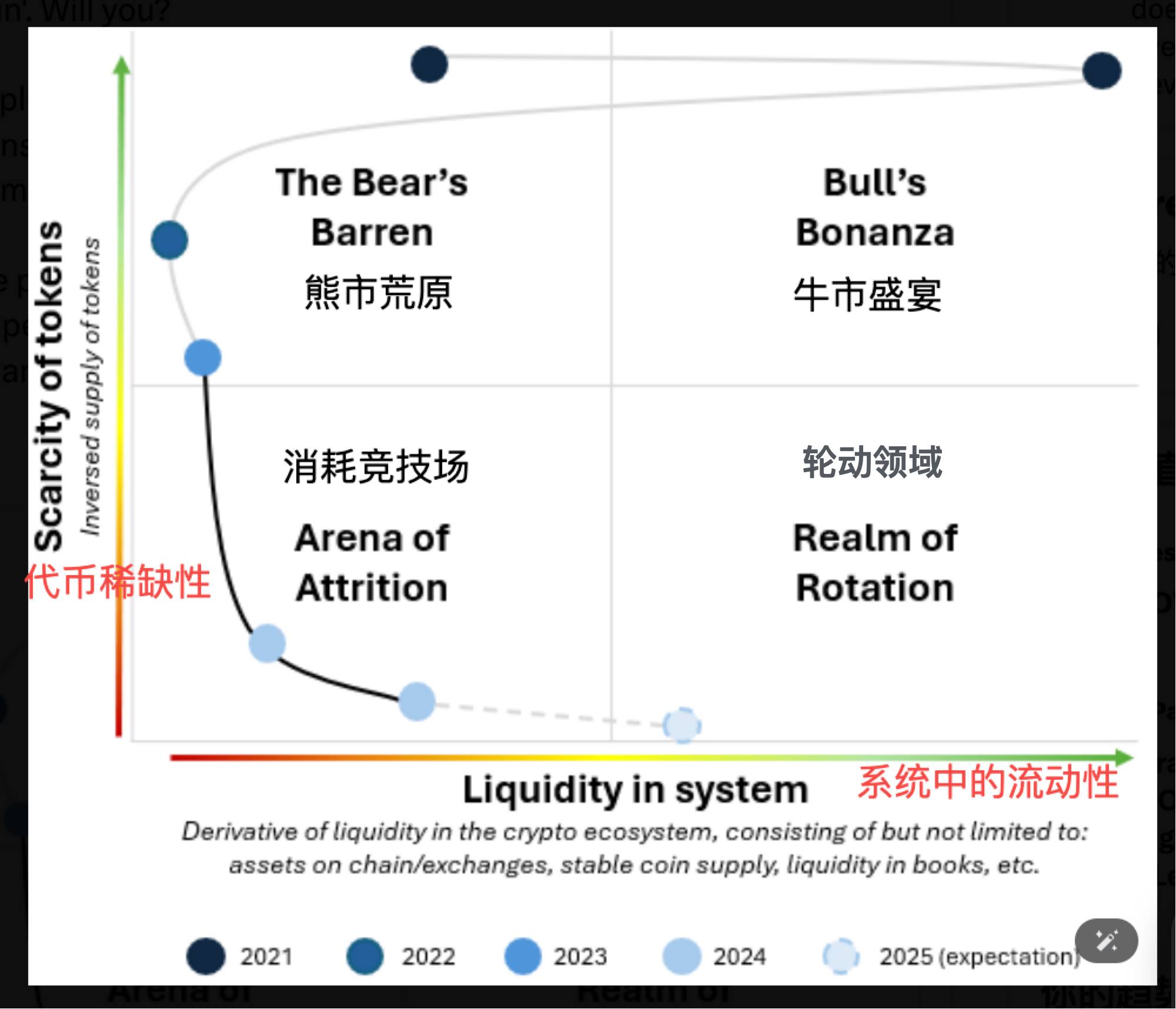Author: Rancune
Compiled by: TechFlow
This may be one of my most important posts to date. Many people may miss the "bull market". Do you? Many people here think very linearly, only in terms of bear or bull markets - one-dimensional; prices either go up or they go down. This view has long made me uncomfortable (refer back to exhibit A in the first reply). Today, I present a new conceptual model that I believe:
a) provides a new perspective on the cycle,
b) help us better understand the current situation,
c) is operational.

Dimensions
Liquidity in the system | Cryptocurrency is more difficult to access than traditional finance, and is not mature enough in terms of efficiency, deposits, stablecoins, accessibility to centralized exchanges, etc. Especially now, Bitcoin and Ethereum have the guardrails of traditional finance, but these guardrails are not transmitted downwards, and the rules of the game have changed.
Scarcity of Tokens | Supply is a major factor in cryptocurrencies; it determines the denominator in which available liquidity must be dispersed. This is different from traditional finance, where the number of tokens is naturally limited and usually requires an IPO rather than rushing to Pumpfun upon hearing a word on Twitter Space.
According to my theory, we surged from low liquidity and low supply to high liquidity and low supply (the "bull frenzy") in 2021. Afterwards, we crashed and ended up in the "bear wilderness" in 2022. Many call this the bear market, low supply, and low liquidity. The similarities between the bear wilderness and the bull frenzy are that tokens rise (or fall) in unison due to low supply. Markets move, not necessarily narratives (although they obviously exist, but usually last much longer than our current 15 minute meta-narrative).
Slowly recovering from the damage done by FTX and the impact of FTX’s liquidations on the ecosystem, liquidity has increased slightly, but token supply has increased more. Easy prey have exited the game, leaving experienced (and malicious) players with their extraction infrastructure already built and in place to extract more.
Starting in 2023, we enter the "attrition arena" where we cannot benefit from higher liquidity because token supply increases exponentially. It really is survival of the fittest; the most skilled (or those with the best connections/most inside information) win. Everyone else gets to take the slack.
We often attribute token growth to Pumpfun and Solana shit coin, which is obviously true, but it's more than that. It's also the sheer number of useless L1s, L2s, rollups, AI protocols, bridges, etc. Obviously we need forks of everything, and we absolutely need more VC-funded L2s with no organic volume. This is what I wrote about in exhibits b and c.
In my experience, every time we have an expansion in the crypto space, there is always a contraction phase. Whether it is in Altcoin or memecoins, there is a movement to quality assets.
As liquidity increases, my expectation for the next 6-18 months is that we will enter a rotational space. We will gain some benefit from the increased liquidity, but only within specific narratives and operations. Most holders will continue to hold their stagnant or slow-bleeding tokens forever, looking back after Bitcoin goes to 6 figures and thinking: did I miss out?
We won’t have the same bull run everyone associates with the “bull run” after 2021. It won’t be possible because the skills of token issuers have matured (whether it’s your favorite PF serial scammer or a VC trying to extract liquidity from another metanarrative).
But how do you operate in the world of rotation? I will explore this question in depth in the next article.





